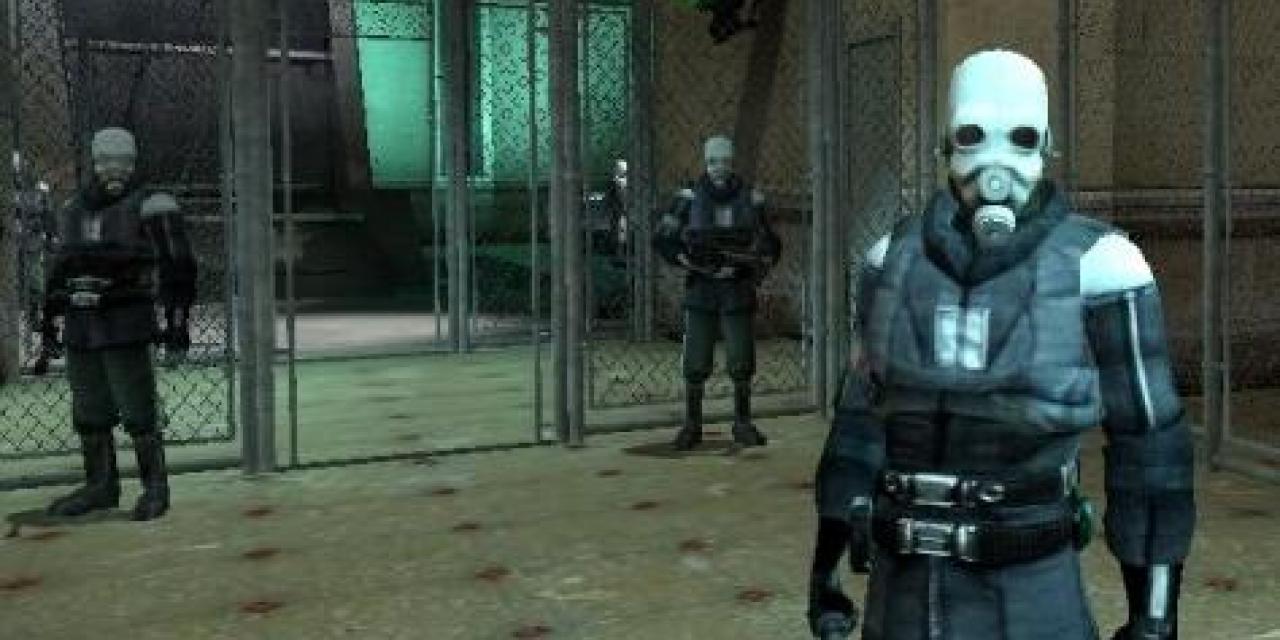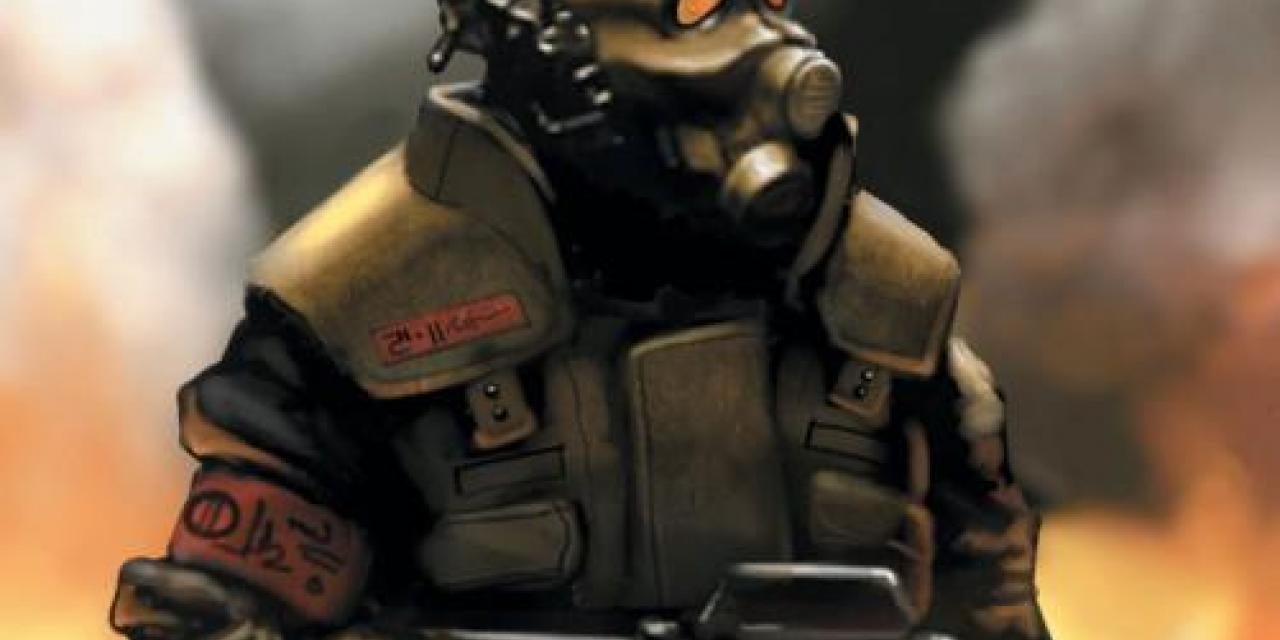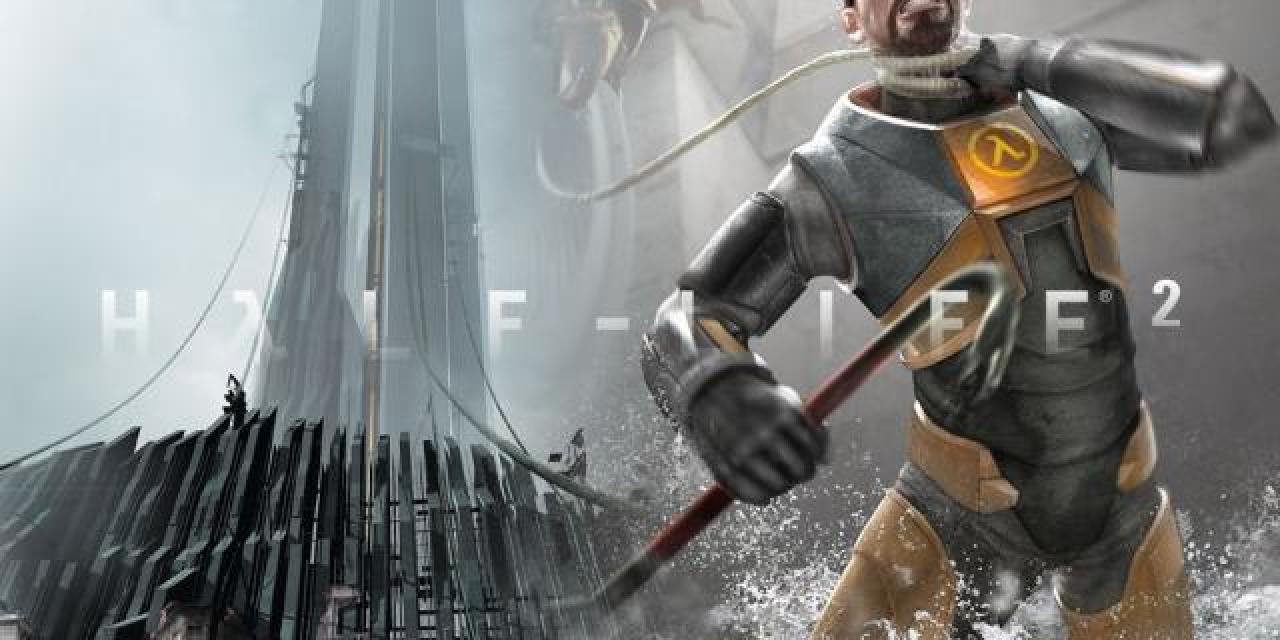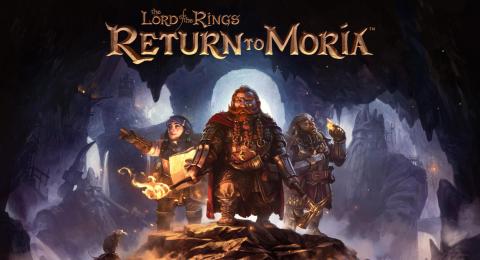




Gordon freeman's visit to City 17 has taken six years and a full soap-opera's worth of drama to materialize, so join us as we investigate the Chronicles of Freeman. A journey following the MIT graduate's decision to visit City 17 and the twists and turns which plagued and ultimately delayed his journey.
When Valve unleashed the original Half-Life on an unsuspecting public in 1998, the magnitude of the response and the mesmerizing appeal of the game left everyone with little doubt that a sequel was planned. In what was soon to become typical Valve fashion, the developer refused to release any information on the Half-Life 2 project and on its progress. While details were not available Valve had already been working hard on getting the H-L sequel project off its feet and had already made a few vital decisions including the need for an in-house engine rather than a licensed one such as iD's Quake III engine which would have been a logical step since H-L had used iD's original Quake technology.
The point to stress is that Gordon Freeman was already packing for City 17 in 1999, even though his final destination or details of his trip were not yet known even to himself.
An ominous shadow begun to cast itself over the Half-Life 2 development cycle by as early as 2000 when Valve co-founder and major contributor to the original game, Mike Harrington decided that one Half-Life was enough and quit Valve. The future of the game hang in the balance as Gabe Newell had to decide how to deal with his partner's decision and choose Mr. Freeman's next port of call.
There are really two Freeman tales, the one which is comprised of the events leading to the March 21, 2003 Half-Life 2 Official announcement and one which is the well publicized but no less obscure, tale of the run-up to release.
The first tale and the one which is much more apparent for anyone who has already tried the game, has to do with the creative process and the choices Valve made regarding the sequel of the most popular game in the world. We already mentioned the company's desire to create an in-house game engine, a decision which added a minimum of 2-3 years on the development time scale but one which had to be made if the game was to meet its developer's demands, both creatively and financially. While it is convenient and effective to use an in-house engine to achieve the wonders of physics-driven gameplay and emotionally effective facial animation, the major contribution of the engine to Valve is the licensing revenue which it should bring. One game, Vampire : Bloodlines is already paying for the benefits of Valve's source engine, while the outfitting of the original Half-Life and Counter-Strike with source technology is a sign of how hard Valve plans to have its engine work for the next few years.
Valve's initial success with Half-Life was not widely anticipated or expected so the demands on the developer were not that great when the game was being made. A group of ex-Microsoft employees got together and tried to create a good game. They managed to focus on the task in-hand and they came up with the most popular game of its time while the use of someone else's engine allowed Valve to concentrate on gameplay and other innovations which really made Half-Life a pioneer.
Half-Life 2 however, was a different story. The secret was out, every one new what Valve could achieve, rushing-in a sequel, as most developers do nowadays due to financial and publisher demands was not an option for Gabe Newell and his crew. Retaining the prestige and quality of the game was as much part of the H-L 2 process as was continuity with the original game. Whether it is movies or games you consider, most sequels fall far short of the original, many times turning out to be pure financial exercises aimed at maximizing profits. Valve knew this and decided that the company had to receive a face-lift as did the characters involved. Having created a strong bond with the gaming community, Valve proceeded to examine the reasons for H-L's success in order to decide how to prioritize aspects of the sequel's development. One aspect of the original title kept popping-up time and time again, forcing Valve to consider ways of implementing it into H-L 2. Half-Life had managed to get players to care for the characters involved; this connection enhanced the gaming experience and increased the replayability of the game. Valve decided to work hard on making the characters more influential and their effects on the player more intense. Such a plan required many changes to the way Valve had operated when working on H-L while it also required changes within the company. It is at that point, we can speculate, that the company's distant and silent profile may have become a conscious decision changing the dynamics of Valve's interaction with the media, its business partners and ultimately its customers. The weapon chosen to implement that isolation was Gabe Newell's choice to utilize a doctrine, remnant of his Microsoft days no doubt, of a centralized content distribution channel.
It is spring of 2002 and Valve has just announced details of its Steam technology. It is probably at this point that we can pinpoint Valve's relationship with its publisher crumbling beyond repair. Newell claims that Steam will revolutionize gaming by giving the developer full-control of the product and its distribution. He does fail to mention how exactly the consumer will benefit since he does not talk of a reduction of the final price of the product but rather of an explosive increase of developer revenue. Mr. Newell also fails to mention how some communities may be completely excluded by the need to access the Steam service, as has become the case with many Universities. Much of the original game's popularity originated from campuses worldwide where students got involved in a variety of Half-Life set-ups. Some of these communities have now been completely excluded since many University firewalls will not allow Steam to connect.
Valve however, still moves ahead with Steam, gradually implementing the service and making it a requirement for all of its products. It is also at about that time that Valve's second H-L 2 misfortune strikes, when the company decides to pull out of E3 2002, considering that it did not have enough material to present. It may not sound very important but it is that particular point in time which may have been responsible for the first delay of the game. Although not already announced at the time, this setback meant that the public had to wait another year until Half-Life 2 was made official and Gordon had to remain in limbo for a while longer.
The conscious decision made by Valve was not to announce the game until they knew where Mr. Freeman was traveling to, Black Mesa was out, so was a space based planet-to-planet idea. The idea was that if the destination was agreed upon, packing would be a relatively simple task.
The decision to send Gordon on a trip to City 17 was not just a result of the picturesque settings but rather an attempt to investigate some sinister events and the realization that physics-driven gameplay would be much more effective and impressive in a quasi realistic setting.
So when, in March 21, 2003, Mr. Newell made the announcement he concluded, with confidence We're going to launch the product at E3 and we're going to ship it on September 30, 2003.
The elation of fans of the game was short-lived as a couple of months later, at E3 in mid-May 2003, Valve decided against presenting any playable form of the game but used a tech demo demonstrating the emotion engine and the physics-driven gameplay. Fans, impressed by the Valve E3 presentation heard the doubts being raised regarding the September 30, 2003 release but Mr. Newell insisted on confirming that Gordon would be arriving at City 17 on the announced date.
It was a lot later that we found out that upon returning to Valve HQ Newell refused to accept the obvious, that the game was falling behind and that Mr. Freeman's various vehicles were still not working. No buggies, no airboats how exactly was he supposed to traverse the enormous landscape which Valve had created for him.
We were rapidly moving towards the most controversial period of Half-Life 2 development and the one which left its marks deeply etched into all parties involved in the game.
The first setback was a result of the lack of cooperation between publisher and developer, on July 29, 2003 VU Games informed retailers that the game would not make its announced date and that it had been pushed back to holiday 2003. When questioned about this by fans Mr. Newell responded First time I've heard of this. By that time Valve had already been deeply involved in a series of law suits with its publisher and Newell's reaction may have been as much a response of confusion by the actions of his partner than a reply to the question.
In late 2002 Valve sued its publisher VU Games claiming that it illegally sold Counter-Strike licenses to cybercafes. As is common practice in such cases, VU Games counter-sued Gabe Newell and Valve COO Scott Lynch and their wives, claiming that Valve was neglecting Half-Life 2 and was using the game as a hostage in order to get VU Games to pay millions of dollars. As you might expect VU Games was not very happy about Valve's Steam and claimed that it undermined its rights to publish and distribute Valve games.
This development caused Valve to continue packing Mr. Freeman's bags with even more intent and on August 27, 2003 during the ECTS show in London the entire company insisted on confirming that the game was still on for a September 30 launch, even though shipping was only a month away and the game had not reached Gold yet.
It would seem that by that point the need to prove VU Games wrong became more important then the realization that if the game did ship at the announced date it would be severely flawed. The biggest twist in the H-L 2 story however, was about to happen and as a result we may never discover when the game would have been released.
It took almost another month before Valve, on September 23, accepted the fact that Mr. Freeman had more luggage than initially expected and that he would not make the scheduled September 30, 2003 train to City 17. Gabe Newell confirmed the possibility of a holiday 2003 date but this time he knew better than to commit to that.
Games are often delayed and most developers are able to save the day by the usual to ensure quality announcement. This case however, was far beyond that, it was not the delay itself which caused the severe reaction by fans but the fact that Valve left it so late to come clean and that while VU Games had confirmed a delay in late July, Valve insisted on telling fans otherwise. Many interpreted that as lying and felt alienated by Valve, a company with a dirty past. Fans started mentioning the dreaded Team Fortress 2 1999 fiasco in the same breath as Half-Life 2.
According to Mr. Newell, Valve committed a series of errors from the moment it realized that the game would not make its release date post E3 2003. He explains the errors as a paralysis experienced by the company since no one could confirm a new travel date for Gordon and since Duke Nukem has pretty much ruined the when it's done, option for everyone in the industry.
When Gabe Newell discovered that his email account had been compromised it was already too late. A big chunk of the source engine code had already been removed from Valve servers. On October 4 the Valve source code was released on the net while 3 days later a playable version of the game also appeared. The release of the playable version of the game was a double-edged sword for Valve. The game made it painfully obvious that Half-Life 2 was not even close to being ready on September 30, causing Valve severe embarrassment, even the hacker himself, later found out to be 21-year old Axel G from Germany, commented on Valve's lack of honesty regarding the progress on H-L 2. The bright side for Valve, if anyone could call it that was that the game released was no better than a demo and a restricted one at that.
Now the theft and the media circus which accompanied it was a vital turning point for Valve's relationship with its fans. Looking back at the whole business now we can see that a lot would have been achieved had the developer handled the situation differently. Sadly the timing of the theft was intrinsic to the course which events followed. Valve decided to stick to its no comment strategy, a decision which led many fans to believe that the company was attributing the delay of the game to the source theft. This, in turn, caused a tidal wave of conspiracy theories to appear all over the Internet, most claiming Valve was somehow involved in the theft, in order to buy more time. At that point fans begun considering the possibility that H-L 2 may not even make a 2004 appearance, with many suggesting that the theft, if real, could bring the entire company down. Stories of code from Havok, H-L 2's 3rd party physics engine, being part of what was stolen started surfacing accompanied by tales of law suits and other disasters. Doom was in the air and it became even more apparent when a Half-life 2 rival and a game involved in a silent race with Valve's sequel, managed to retail in August.
Valve continued working on the project as intently as ever but focus was beginning to falter. We later found out that between February and March 2004, when the H-L 2 Alpha testing begun, Gabe Newell was involved in correspondence with the hacker in an attempt to lure him out of hiding.
The team behind the game however, is still working hard and by July they are certain that the game is almost done. In August Doom 3 ships, handing Valve another blow as its main rival and a game also plagued by production difficulties, beats it to the market.
On September 15, 2004 Valve announces that it has shipped Mr. Freeman's luggage to customs for inspection, the luggage is returned with some minor pointers but at that point Newell realises that VU Games will not attempt to impede the release of Half-Life 2. The November 16 date is announced and gamers around the world brace for the game's impact. Realising that the release is near Valve manages to cause its fans some more distress with two announcements.
The first one confirms a rumour which had been doing the rounds for quite some time, that there would be no Half-life 2 multiplayer and the other claims that for anti-piracy reasons, the game will require online activation, another Microsoft influenced decision we would guess.
The Chronicles of Freeman were not meant to examine the quality of the game but rather to highlight the process and underlying actions which led to the game's release. Mr. Freeman's journey and the quality of his trip to City 17 are a different matter. We can now confirm that even when faced with the troublesome activation procedure and with some crashes and even choppy sound, this game deserves all the accolades it has received. It is a truly elegant attempt to offer something new to the FPS genre while it succeeds where most games fail to go. Half-Life 2 excels at everything it sets out to do and even the non-linear highly scripted sequences still leave you with your jaw dragging on the ground. We can only praise Valve on their end-product and hope that the company can use the considerable experience it acquired during H-L 2 development in order to provide a better product in the future.
We look forward to providing a detailed journal of Mr. Freeman's impressions of City 17 as soon as he sends them in.








